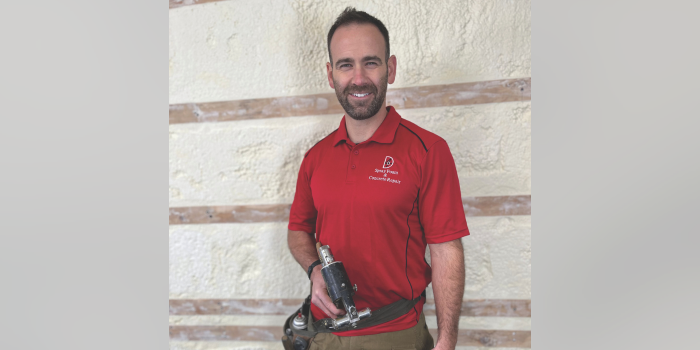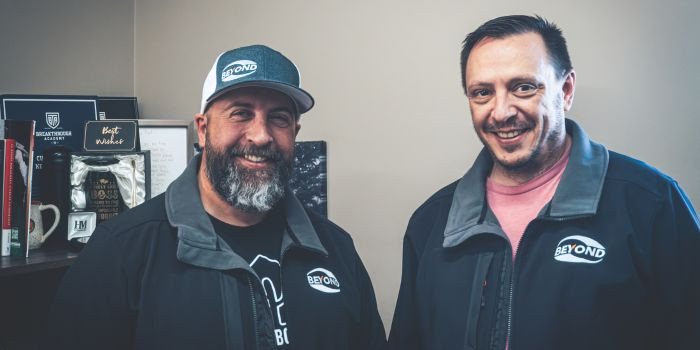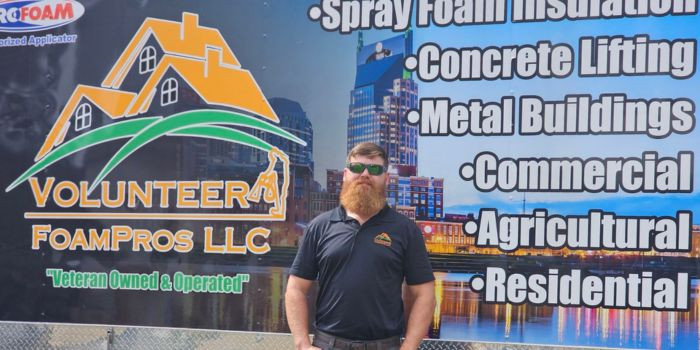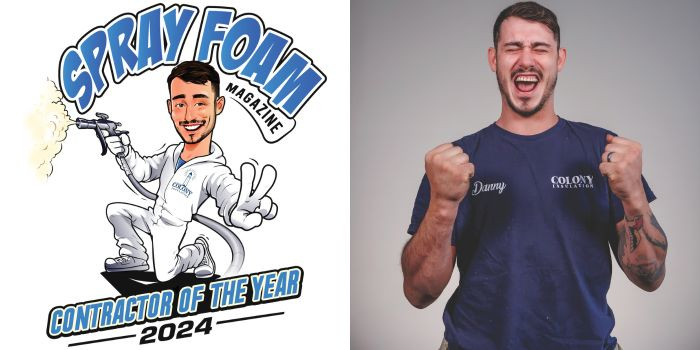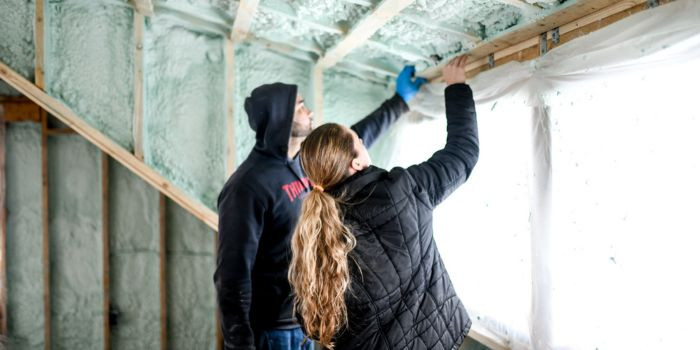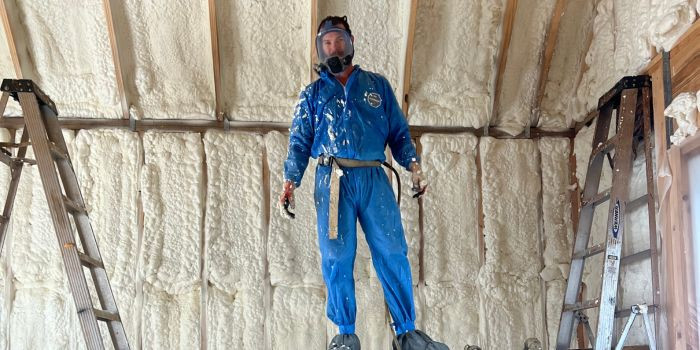Ten Best Practices for a Profitable Spray Foam Company


Spray Foam Magazine – Spring 2021 – There are numerous books and articles describing best practices for operating companies in all sorts of different industries, but the spray foam business has a few essential practices unique to our market. In this article we visit some universally important practices then offer some that are spray foam-specific.
- GET PAID: The first tenet of all business in all industries is to get paid for your work! It seems so simple but many spray foam contractors don’t get their billings out in a timely fashion and therefore have a difficult time collecting the money they worked so hard to earn. Your management team should live by this simple motto:
> Billings Out > Collections In > Take Care of the Customer > In this order! - STOP CALL BACKS!: Rework, repairs, call-backs; whatever you call them, they kill profit faster than anything else in business. The most common call-backs for spray foam contractors are to add foam where it was sprayed too thin or is missing altogether. We all know how easy it is for a sprayer in proper PPE to miss a thin spot or a gap in foam under a window sill or beside an electric outlet, but most spray crews have an often-overlooked team member who can almost always catch these mistakes if they’re trained to do so.
The helper is the last person to see most of the foam and if he or she is trained to find these defects, most call-backs can be avoided. A simple checklist can be created to train and establish the quality standard for the job, and this quality standard must be adopted by the whole company in order to avoid call-backs.
The savvy business owner will create and categorize pictures of acceptable foam applications and everyone in the company must be trained to understand the importance of the company quality standard and know how to talk about the appearance of the different job types. For instance, spray foam might be sold to satisfy an R-20 wall cavity code with a medium-density, closed-cell foam. The stud cavities will not be full-filled, but some builders might not understand the superior thermal performance of spray foam and insist on the SPF contractor coming back to full-fill the cavity. This misunderstanding can be avoided if the salesperson includes your picture with the contract signed by the builder. The same photo should go to the job site for the crew to also understand the expectation. This is so simple and can avoid extremely costly call-backs.
- CHECKLISTS: A checklist is your action plan for every task performed by every member of your team. The salesperson has specific paperwork needed to initiate a job. A checklist should define the requirements and once completed it should be filed along with the other job documents. One of the checklist items is to leave a photo of the agreed-upon appearance of the foam on the job. Checklists used by the estimator can help identify commonly missed areas and job conditions that might make the job more difficult, and a checklist for breaking down the bid will reduce misunderstandings later.
The crew has a checklist for prepping the rig, another for prepping the house or building, and others to cover every probable scenario they might encounter. If an item on the checklist is not followed, talk about it and either change the list or change the crew’s actions. These should be living documents, but must be adhered to in order to maintain a safe work environment and get the job done profitably.
- TRAINING: Checklists are terrific once everyone understands their importance and willingly uses them. Checklists also make compensation calculations easier as job performance can be more easily measured. Understanding and agreeing to use the checklist is a matter of training that every SPF contractor is responsible for. Training to understand the company’s quality standard and how each team member contributes to “Zero-Defect” jobs is the fastest path to success. Involving the crew in creating and maintaining the checklists will make adoption and steadfast-adherence easier. Some SPF contractors lament they spend so much time and money to train crew members who leave the company, but the reality is it’s far more expensive to not train them and have them stay! Untrained workers cost the company time and money so training is imperative. An individual training plan can be developed and a checklist created to set expectations and know when to adjust compensation.
- USE AVAILABLE TECHNOLOGY: We are so fortunate these days that everyone on the crew carries a veritable personal computer in their pocket! Cell phones and cheap data storage have changed the way we operate our companies and train our crews. The salesperson can now “walk the job” virtually, either live on as a recording for the crew. He or she can point-out the areas of concern and show the crew what is expected. Photos of before and after the SPF application should also be included in the job file. If the crew encounters difficulties, a quick video and some photos will instruct the salesperson so errors and omissions can be avoided for the future.
SES has a team of highly skilled technicians just a call, text of video-chat away. Often a couple of minutes on a video-call can save hours of downtime. The SES tech service team can help solve most problems while they’re still manageable, before they shut-down your rig. A great checklist item is to have the name and contact number for your SES Foam tech rep listed on the jobsite checklist.
- A PLACE FOR EVERYTHING, AND EVERYTHING IN ITS PLACE: The most successful companies in the world use a system called “5-S” to organize every area of the business. The office, shop, rigs, sales vehicles; everything! The rig will be much safer when it has been Sorted, Set in order and made to Shine. When it is Standardized and a System is created to sustain this organization, the spray rig will be capable of reaching peak performance. Until the rig is optimized, the crew will never be as efficient or safe as possible. There are great books and articles about 5-S, which is sometimes called the “Toyota Quality System.” The system is simple and effective and when the entire company works together to create a 5-S program everyone will be happier and more productive and the company will be more profitable.
- PLAN FOR SUCCESS: Who predicted the events of 2020? And, who was prepared for both the bust in the spring and the boom to follow? We’ve long advocated for SPF business owners to consistently contribute to a growth fund they can use for buying a new spray rig or for funding a new salesperson or middle manager until they become productive enough to pay their own way. This growth fund might have been greatly appreciated as business came to a grinding halt when we went into the COVID lockdown last March. Bills kept coming and overhead expenses didn’t slow down as fast as revenue, but the companies that had a reserve got through those several weeks of uncertainty and were able to restaff to meet the increased demand for spray foam in the months since. This planning is absolutely essential for the long-term success of any business and imperative for labor-dependent businesses like spray foam.
- HEAT!: Spray foam loves Heat. The rig works best when it’s warm, the chemical flows more easily and more consistently, the foam sticks to a warmer surface more readily and yields can be dramatically better when everything is warmer. Adding heat is perhaps the best investment you can make in your business. Add heat to your chemical storage to save hours of prep time every day, especially with low-density, open-cell foam. Add heat to your rig for a happier and safer crew and to make all of the equipment operate more efficiently. Add heat to the substrate to enhance adhesion and make sure your hose heat is working perfectly. Every checklist for sales and operations should address heat and how it will be managed for optimal performance.
- MAINTENANCE: Spray rigs are expensive to maintain, and those without a scheduled maintenance system and a checklist to verify completion will be even more costly. Daily maintenance is better performed in the shop than in the field. A spare gun per rig is a very good investment so the crew never has to stop to repair or rebuild a gun. At least one drum pump in the shop is essential. A fluid temperature sensor and some of the other items known to fail should be kept on hand...in their proper place and always in operable condition.
The goal of every SPF contractor should be for each rig to actually spray at least 6 hours a day. Using a small tip on a medium-size proportioner, a set of chemicals can be processed in under 100 minutes. It’s not uncommon for spray rigs to actually spray properly processed foam less than three hours a day. Measure your average production rate and work with the crew to set expectations. This takes training and adherence to checklists in addition to maintenance, but without maintenance the rig will not be making money.
No One Makes Money In The Spray Foam Business Unless Someone Is Pulling The Trigger!
- 10. KNOW YOUR VALUE: Those of us in the industry commonly agree that spray foam is the best insulation and air-seal on the planet. Crafting a company value proposition is a very good way to get participation from everyone in the company to set the course for the business. Just as the business adds value to the building industry, the SPF company’s team members add value to the company. Expressing appreciation when every checklist item is done well goes a long way. Teaching everyone the value the company brings to the building industry helps them understand how they contribute to energy conservation, reduction of greenhouse gasses and slowing climate change. Everyone from the business owner to the jobsite assistant is making a serious difference, one house and building at a time.
For help growing your business and if you’d like to partner with a spray foam manufacturer who understands your needs, contact SES Foam: 713-239-0252
*Spray Foam Magazine does not take editorial positions on particular issues; individual contributions to the magazine express the opinions of discrete authors unless explicitly labeled or otherwise stated. The inclusion of a particular piece in the magazine does not mean that individual staff members or editors concur with the editorial positions represented therein.
Disqus website name not provided.




